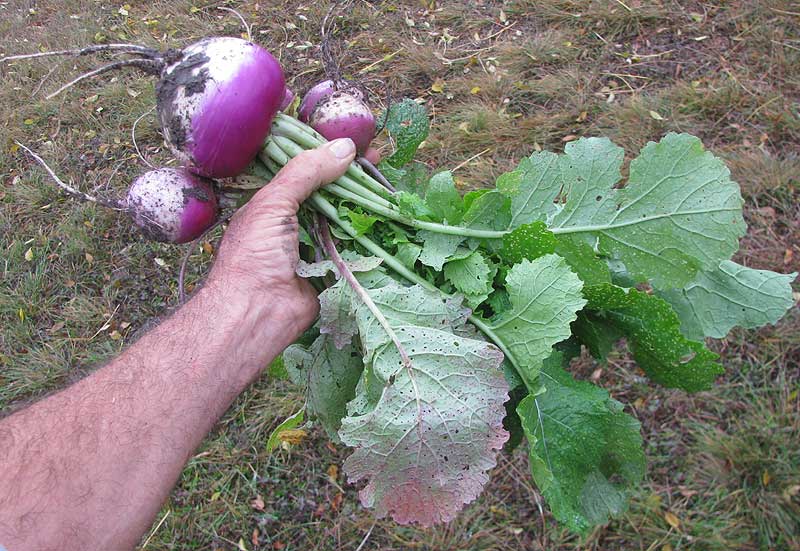Excerpts from Jim Conrad's
Naturalist Newsletter

from the December 9, 2012 Newsletter issued from the valley of the Dry Frio River in northern Uvalde County, southwestern Texas, on the southern border of the Edwards Plateau; elevation ~1750m (~5750 ft); N29.62°, W99.86°; USA
TURNIPS
I've seldom enjoyed any garden harvest more than I have this year's crop of turnips. The day after I arrived in southwestern Texas in late August I dug from my backpack a brown paper bag of turnip seeds brought from Mississippi and sowed them in a raised bed. A month later I sowed a garage-size patch of them, and now both sowings are producing prodigiously. The turnips couldn't be more flavorful and sweet. Turnips ruin during hard freezes, so I'm hoping we'll have a mild winter here and my turnips will keep producing until they bolt in late spring.
Intentionally I sowed the seeds far too thickly. As soon as the seedlings were one or two inches tall I began "thinning them out," cooking the leaves as greens. By mid September I was having a daily serving of delicious greens, often mixed with mustard greens, which also I'd sown from a bag brought from Mississippi. You can see what a typical daily harvest of turnips looks like nowadays at the top of this page.
In that picture you can see that the leaves are heavily perforated with small holes caused by the Crucifer Flea Beetles we looked at a while back. Despite the obvious damage, it's hard to see how both the leaves and turnips could taste any better. However, both of my turnip sowings have been attacked and seriously damaged by leafcutting ants, which cut and carry off in small pieces entire large leaves.
The turnip plants in the picture are BRASSICA RAPA ssp RAPA 'Purple Top White Globe.' Purple Top White Globe is the cultivar name. The "ssp rapa" part of the name indicates the subspecies. "Seven-top Turnip," much grown in the US Southeast for its edible leaves, as well as one of the two cultivars known as the oil-seed-producing Canola, belong to the subspecies campestris. Chinese Cabbage belongs to the subspecies pekingensis. In human history, Brassica rapa has been one of the most important taxa of edible plants.
Wild plants of the subspecies "campestris" still can be found growing wild in Europe, though the wild ancestors of our purple-tops seem to have disappeared.
Sometimes it's hard to know whether the edible part of a plant growing entirely or partly underground, like turnips, is a modified root, modified stem, or what. Turnips are tubers, so they're roots.